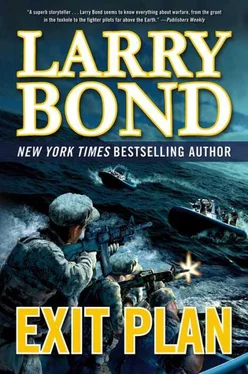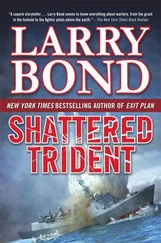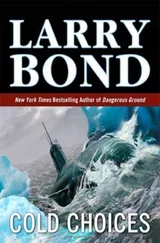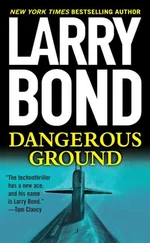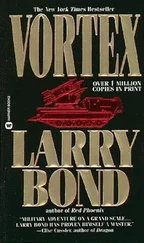With Lapointe treated, Fazel had gone into sniper mode, concentrating on the PKM machine gun that flanked them. He’d hit the gunner at least once, but after a short pause, it had started up again. The SEALs picked their shots carefully, no more than two rounds at a time, both for maximum effect and to avoid revealing their location.
In between mortar bursts, Phillips had spotted movement along the highway, then the others saw it as well — soldiers lining up along the road. “They’re positioning themselves for a charge, once the mortars have softened us up.” Ramey and the others picked off a few who didn’t stay low enough, and tried to keep the others’ heads down in between mortar bursts.
Jerry held the controller so Lapointe could operate it, and followed the petty officer’s hands as he powered up the device and tested the controls. It was designed for use in the field, but Jerry had never trained on it. Lapointe was breathing hard, but ran Jerry through the procedure.
As Jerry started to ask a question, the controller beeped twice, and Lapointe said, “Time’s up. Take it, XO.”
Jerry fitted the visor over his eyes and adjusted the strap. The visor was size of a pair of safety goggles, but heavier. Inside Jerry saw bright symbols and numbers surrounding a black rectangle. In the center of the display, the word “Signal” blinked, and Jerry could feel Lapointe guiding his fingers on the hand controller. Lapointe placed his index finger on a switch, and the image came alive.
He was flying over a dark, featureless surface. A bright, irregular landscape lay in the distance, but he was closing in at high speed. The numbers and symbols started to change, and he recognized readouts for airspeed and altitude. “I’ve got the signal,” Jerry reported. He was over the water, approaching the coast.
Guided by Lapointe, Jerry’s finger pressed another switch. “You’ve got it,” the petty officer told him.
Jerry gingerly moved the controller, and saw the landscape fall away as the UAV climbed. That suited him fine. Aviators get nervous too close to the ground, especially in an unfamiliar aircraft.
“I’m slowing down,” Jerry stated. The speed readout was over five hundred knots.
“Stalling speed is one twenty,” Lapointe told him, “but you’re loaded, so try not to drop below one forty.”
“Understood, bringing it down slowly,” Jerry replied. “Five hundred, four fifty…”
The vehicle slowed quickly, and Jerry experimented with a left, and then a right turn. He quickly brought the UAV back on base course, though. A cursor at the top of the display indicated the direction to the controller, bringing it straight toward him.
Jerry brought the Cormorant in overhead at five hundred feet and two hundred and fifty knots. On the thermal imager, he could see the bright flare of the burning truck, and the line of soldiers lying prone along the highway. “I’ve got them!” he announced.
“Find that goddamned mortar!” Ramey ordered impatiently, and Jerry, already past the battle, turned the Cormorant to the right, trying to time the turn so he ended up over the highway. He was off, with the highway to the left of center, but as he flew overhead, he saw two human figures well back from the highway, working with something even brighter and hotter than they were.
“Got it,” Jerry reported. He was past the target by that time, but he risked slowing a little more to focus on making a crisp one-eighty. This time, as the Cormorant passed over the mortar’s position, he used the hand controller to mark its precise location. Increasing power, he said, “Climbing.” He was getting the hang of this thing. He was sure a pilot had a hand in designing the visor. The readouts looked just like his Hornet’s heads-up display.
At a thousand feet, he made a wide circle, constantly informing the impatient SEAL lieutenant of his progress. “I’m ready,” he told Lapointe, and felt his hand guided to another pair of buttons. “Left to lock them up, right to fire,” Lapointe reminded him.
He pressed the left button, and a bright “L,” for laser, appeared in one corner. Then he pressed the right button twice. The image shook for just a second, and two streaks of light leapt from the foreground toward the two figures and what was hopefully the mortar.
He heard the double explosion at the same time as the screen flared. It was much louder than the mortar shells, and Jerry could see the figures were no longer together, and lay sprawled and unmoving. The laser-guided Hydra rockets had found their target.
“That’s what I’m talkin’ about, XO! Now get that machine gun off our backs.”
* * *
Lieutenant Sistani lay with his men along the highway, trying to gauge the enemy’s status. They were pinned down by fire, had at least one casualty if Alizadeh was to be believed, and were virtually surrounded. He had men to the north and east, the ocean was at their adversaries’ backs to the south, and if they tried to break out to the west, he’d cut them down.
He’d been willing to wait and let the mortar work on them when he heard an explosion from behind him. It had come from the direction of the mortar crew. Had there been some sort of accident? He’d almost gotten up to go find out before remembering the enemy in front of him.
He was still low, crawling to a place where he could get up safely when another pair of explosions ripped the landscape near — No, it was at the PKM’s position. It didn’t fire again. He hadn’t seen anything but rifle fire from the enemy. The range was too great and the explosions too large for a grenade launcher. He thought of a helicopter gunship, but there was no noise. Was it a stealth bomber?
Would there be more explosions? He was losing men, and the battle. His only hope was to close with them so that they couldn’t drop any more bombs.
“By opposite numbers, advance!” Sistani’s only thought now was to finish this quickly.
* * *
Jerry heard Ramey’s shout just as he was lining up for a shot on the soldiers on the highway. In the display, he saw them moving, and pressed the right button twice, quickly, even though he hadn’t marked their position. He kept the crosshairs centered on the middle of the line and watched explosions knock three men off their feet.
But they were coming now. Lapointe helped him find the autopilot key that would send the Cormorant into a circular orbit at a safe altitude.
“Help me up,” Lapointe asked, and pushing up with his good leg, Jerry got the petty officer faced forward, then handed him his rifle.
Jerry grabbed his own weapon and looked for a place. Ramey motioned for him to go to the far end of the line, near the Iranians, and staying low, Jerry joined Fazel and Yousef, both firing.
The Pasdaran soldiers were advancing in pairs, taking turns firing while the other ran forward for the next bit of cover. Fazel was having the best luck sniping at the shooters, who were stationary at least, even if they were under cover. Kneeling next to Shirin, Yousef used his rifle to give Harry covering fire.
Jerry concentrated on the advancing soldiers, trying to guess when they’d spring up and run forward. He might actually hit one, or at least make him stop sooner than he’d planned. The trick was keeping them from getting too close.
Fazel dropped another one. As Jerry tried to count how many were still out there, he saw the soldiers nearest them raise their arms. He shouted, “Grenades!”
They ducked as the grenades fell short, but Jerry felt the blast on the back of his neck. Knowing the explosions would signal a general charge, Jerry came up firing, holding the trigger on full automatic and emptying the magazine.
Yousef was doing the same. Only the SEALs took the time to squeeze off aimed shots. Three soldiers had charged their position, firing as they came, but they all died. Jerry didn’t know who had hit whom, and he didn’t cared.
Читать дальше
